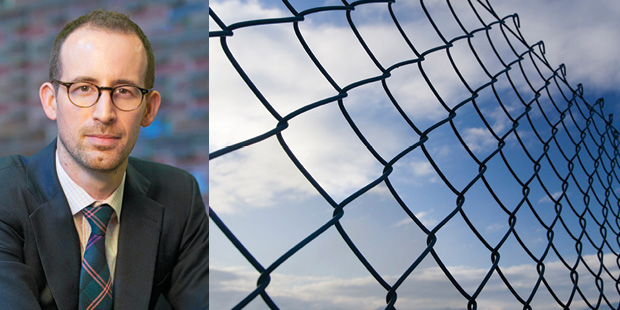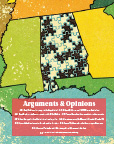Punishment That Doesn’t Fit the Crime?
Printer Friendly VersionAt the red-hot intersection of immigration and crime, the Secure Communities program, launched by US Immigration and Customs Enforcement (ICE) in 2008, permits federal authorities to check the immigration status of every person arrested by local police. The government has touted it as a way to reduce crime by targeting immigrant offenders for deportation. But Adam Cox, Robert A. Kindler Professor of Law, and University of Chicago Law School Professor Thomas Miles have shown that the program fails to accomplish its stated aim.
Readers of “Does Immigration Enforcement Reduce Crime? Evidence from ‘Secure Communities,’” published in the November 2014 issue of the Journal of Law and Economics, might not expect an article authored by two law professors to contain lines like this:
![]()
But Cox, who has an undergraduate engineering degree, and Miles, who is a PhD economist, both bring a strong empirical bent to their legal scholarship. For this study, they employed state-of-the-art econometric techniques to analyze an enormous data set of information on local crime rates, as well as extensive data they obtained through Freedom of Information Act requests from ICE. “These data allow us to identify precisely the counties and dates in which Secure Communities produced the largest numbers of detentions and deportations,” Miles says.
Cox, who taught at Chicago before joining the NYU Law faculty in 2011, has collaborated with Miles before. Both of them, Cox notes, are interested in areas of intersection between what the law is and what people such as enforcement officials and judges do to administer it. In their 2008 Columbia Law Review article “Judging the Voting Rights Act,” they examined voting rights cases (an area of scholarly focus for Cox) and judicial behavior (of particular interest to Miles) and identified racial peer effects on courts. What they found is that race has a powerful effect on outcome; having a black judge on a three-judge panel, for example, increases the likelihood that the two white judges will rule that there has been a voting rights violation.
With Secure Communities, immigration law and criminal law have been intertwined in an on-the-ground enforcement program. Cox read news reports about it as it was getting launched, and something caught his eye: the program would have a phased geographic rollout over a series of years. The staggered introduction across roughly 3,000 US counties, he explains, provided both the large number of study subjects and the randomization that statisticians look for in an experiment. “It was just like this light bulb went off in my head,” Cox says, “and I was like, holy cow, from the perspective of a social scientist, that’s awesome—it gives you this really unique ability to study a federal policy that you otherwise wouldn’t have the ability to study very well.”
A preliminary analysis published by Cox and Miles in the 2013 University of Chicago Law Review noted that the government initially activated Secure Communities in heavily Hispanic counties, suggesting that the aim may have been immigration enforcement more than the stated goal of crime reduction.
In their November 2014 article, the two conclude that Secure Communities—which has resulted in the detention of roughly 250,000 people, the vast majority of whom have been or will be deported—has had “no observable effect on the overall crime rate,” including violent crimes such as murder, rape, arson, and aggravated assault.
The implications of their findings, Cox says, depend on what you think the government’s priorities should be: “Our research will be successful if it moves the debate about immigration policy onto the right terms.”
—


 Multimedia
Multimedia